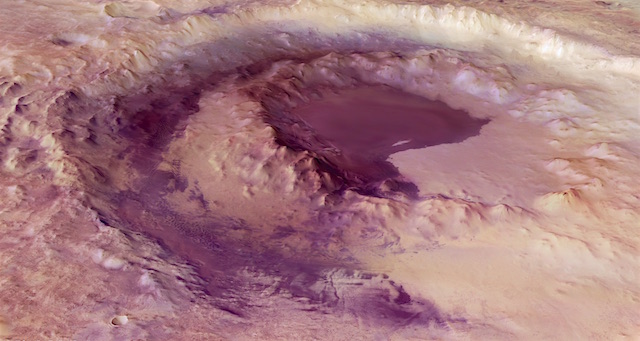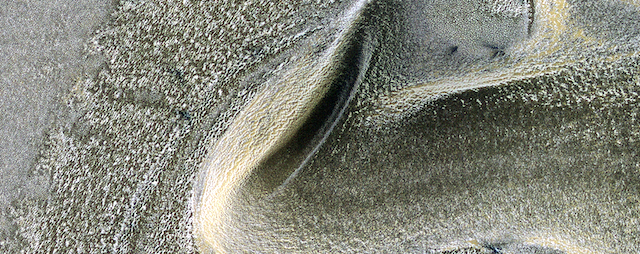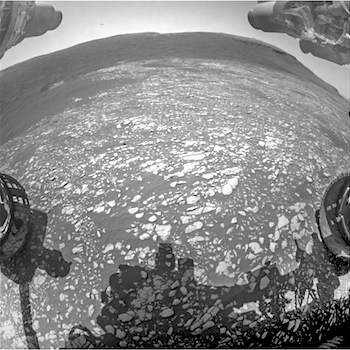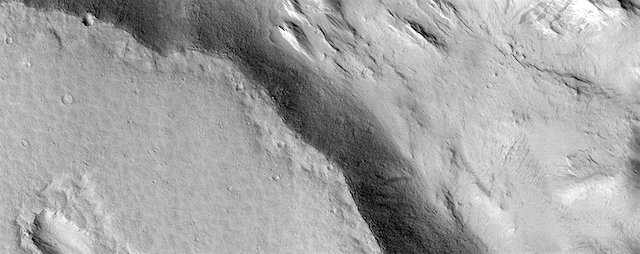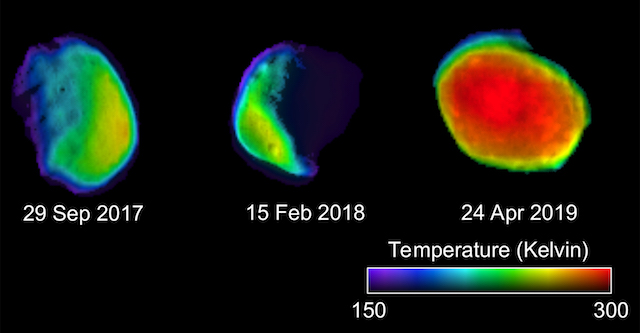[Editor’s note: From a paper by Gerhard Wurm and four co-authors recently published in Icarus.]
A Challenge for Martian Lightning: Limits of Collisional Charging at Low Pressure
• Collision experiments on identical grains show a strong dependence of charging on ambient pressure.
• The data are consistent with a model based on electrical breakdown if two spheres rebound.
• At Martian pressure, the charging has a minimum.
• The data suggest that large scale discharges on Mars are rare and/or less energetic.
Collisional charging is one potential initial step in generating lightning. In this work, we study the charging of colliding monodisperse, spherical basalt grains depending on ambient pressure.
We used grains of 1.0 to 1.2 mm in one set and 2.0 to 2.4 mm in another set. We varied the ambient pressure between 0.03 mbar and 80 mbar. This especially includes Martian pressure being 6 mbar on average.
At a few mbar the net charge gathering on colliding grains has a minimum. A smooth incline in charging occurs for larger pressures. Toward lower pressure the charge increases steeply. The pressure dependence is in agreement to a model where the maximum charge is limited by a gas discharge occurring between two charged colliding grains shortly after or before a collision.
The capability of building up charge is at a minimum exactly in the range of Martian pressures. The charges on grains are at least a factor 5 smaller than at the highest pressure tested and still smaller compared to ambient pressure on Earth.
This implies that on Mars collisional charging and the potential of subsequent generation of lightning or other large scale discharges are strongly reduced compared to Earth. This might result in less frequent and less energetic lightning on Mars.
“The small scale discharges preventing high grain charges might well be one reason why it is still debated if lightning on Mars occurs at all.” [More at link]









